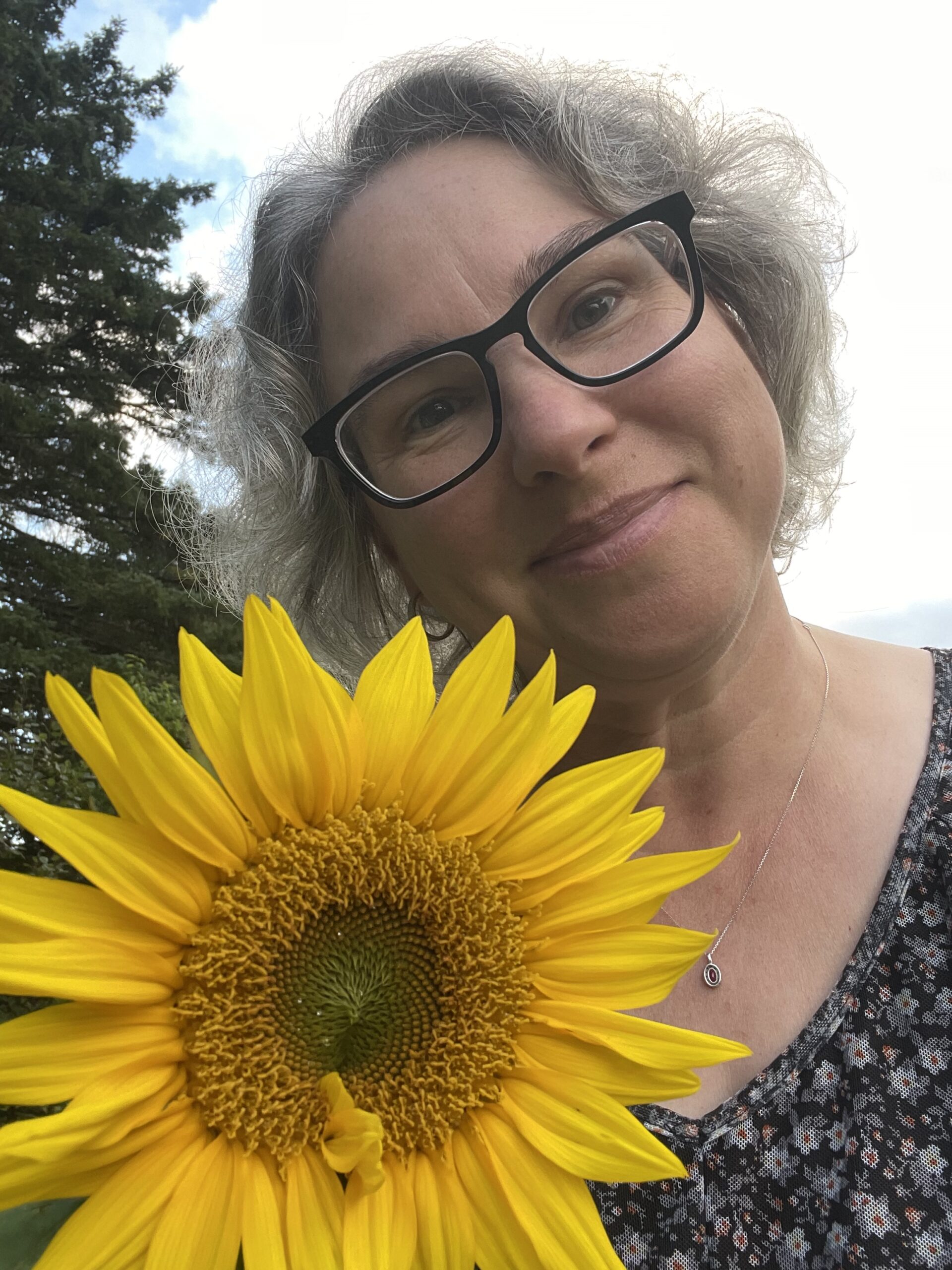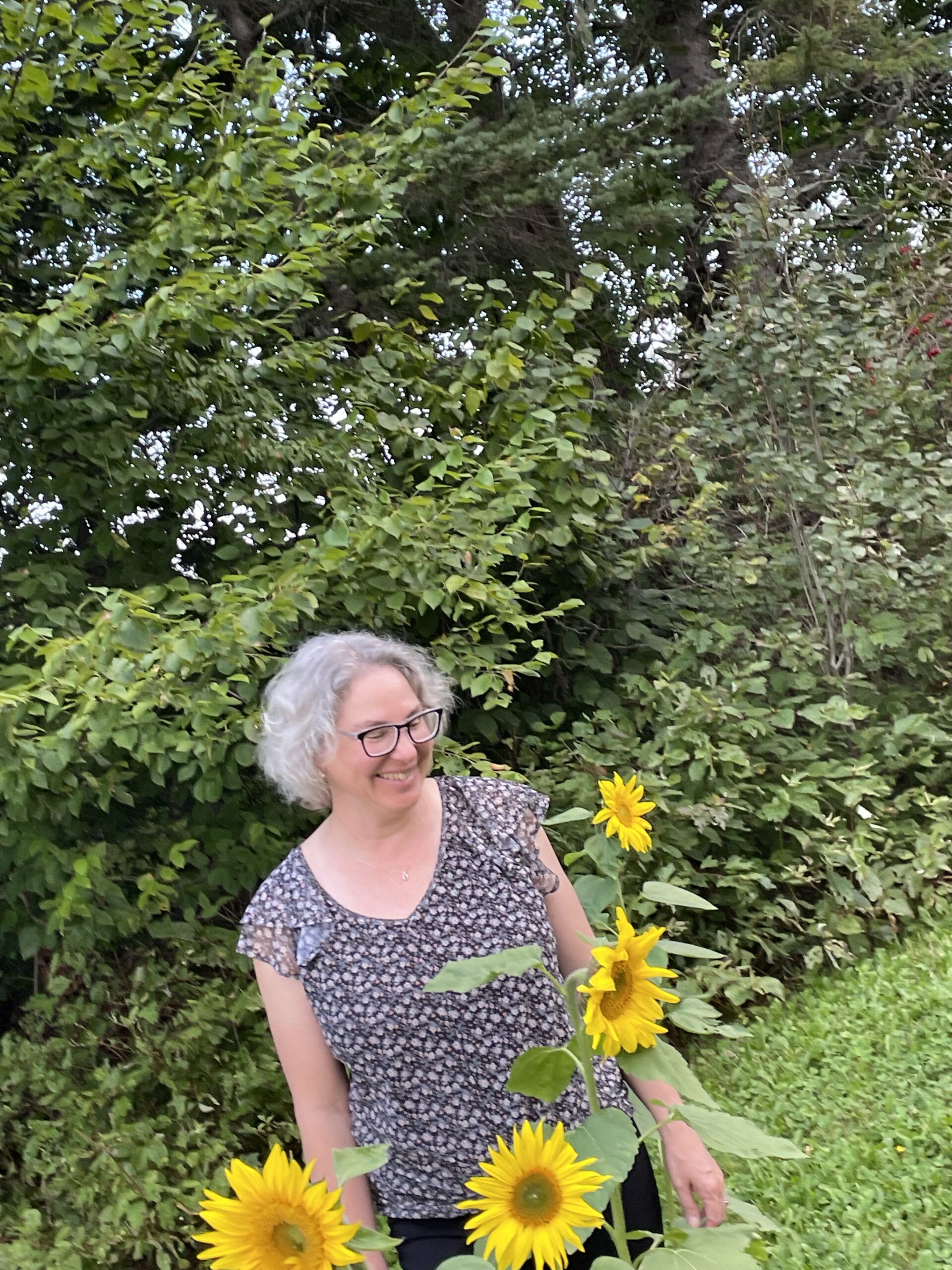A year ago this month, Sweetie and I moved into our 672 sq foot prefab cottage situated on a one acre field in a small rural village. We have a vision for this little piece of land.
Sweetie wants to grow grapes here (in his retirement) and have vegetable gardens and flower beds sooner. He loves to be outside, loves the quality of his own produce, and he says it saves us money. I’m not too sure about that!
I want a food forest. Not because I love gardening, but because I love nature.
Many years ago the property had been part of a small scale commercial raspberry field. Many years before that, a mini-home had been situated on the property.
When I purchased the land there was a driveway, an old well, and a furrowed landscape (from the former raspberry rows) being overtaken by birch, alders, firs, and wildflowers. Mama Nature was moving in!
Let’s take a look at our first year of progress.
Starting from Scratch
We began with our rhombus shaped field. The raspberry rows ran the entire width of the field, from the road to the back line. Trying to walk anywhere on the property felt like you were doing moguls.
The first order of business was to plow the entire field to smooth it out. Living in a rural area, it wasn’t difficult to find a nearby farmer who was willing to do the job.
The soil was much less rich than I would have expected, given that it was part of a former commercial fruit farm. It was coarse, dry, and full of rocks. Some deeper digging that we had to do when setting up the cottage told us that underneath this layer the soil was reddish and seemed clay based.
One side of the property is bordered by a pine and spruce grove that drops it’s needles relentlessly on our property. You can see it in the background of the center garden photo below. The soil along this edge is certainly more acidic then elsewhere.
Even thought it wasn’t the best soil, it was the best location, and this is where we decided to put the vegetable garden.



Vegetable Garden
This was our easy win last summer.
The same farmer who plowed the field came back and made rows for the garden. Sweetie and I picked rocks (okay, mostly Sweetie) and got to planting. We had established a vegetable garden.
We were a little late getting it in the ground because Sweetie’s dad passed away and we spent prime planting time out of the province. Eventually, however, we had 30 types of plants or seeds in the ground.
Our success (or failure, depending on how you look at it) was varied.
- 10 didn’t grow; beets, cucumbers (two varieties) , cabbage, parsnips, turnips, buttercup squash, watermelons and garlic.
- 6 grew poorly; zucchini, carrots, corn, spaghetti squash, Roma tomatoes and Spanish onions.
- 3 had an OK harvest; Romain lettuce, leaf lettuce and cilantro.
- 5 had a good harvest; dill, yellow beans, green beans, rainbow chard, and beefsteak tomatoes.
- 5 had an excellent harvest: peppers, Jalapeno peppers, snow peas, cherry tomatoes, and radish
- 1 unsure – I think we picked the soldier beans as though they were green beans. Oops. Had we left them alone I think they would have done well enough!
Only about 1/3 of our garden did really well, but we were still pretty happy with our harvest. We ate a lot of fresh veggies, canned and froze veggies for winter, and made salsa.






The Food Forest
The food forests is primarily my project. The overall vision is a low maintenance, diverse, food based, perennial garden that mimics the ecosystems and patterns found in nature.
Although the idea of a permaculture garden seemed a little daunting at first, I find it has been developing quite naturally, albeit a little slowly.
Infrastructure
The major infrastructure planning decisions were made in year 1. The house, garage, vegetable garden, firepit, and vineyard locations (all the man-made introductions) have been situated on the property. The leftover space is what is left to work with.
Previously Established
Although it seemed like our lot was just a field, Mama Nature had already been hard at work and given me a head start on this little project. When we were preparing the lot for our cottage I was careful to preserve the little gifts we had been given!
Rose Hedge
Across the entire front of the property is a very old, very well established rose hedge. Despite being neglected for years it flourishes.
Not long after we moved in I realized that a local home based business that creates tonics, toners, oils, and more has been harvesting the rose blossoms for their creations from my hedge. This is probably the reason the old hedge is still producing blooms and I have welcomed them to continue with their annual harvest.
Wild roses are part of the local ecosystem and a valuable part of my new food forest. Apart from attracting pollinators to our property the rose hips are loaded with Vitamin C.


Apple Trees
There are several old apple trees along the tree line and one new one that Mama Nature very nicely dropped in the middle of the field. I was so excited to realize I already had an established young apple tree!
It produced only 3 apples the year before we moved onto the lot, but was loaded with enough apples to make apple jelly last year. I can’t wait to see how it develops.
Willow & Other Trees
The crowning glory on our property is a very old willow tree. I am not entirely sure how it will fit into the food forest, but it resides over the front lawn and I have no plans to remove it.
There were two random fir trees in the field that did not get sacrificed to the heavy equipment needed to set up the prefab or install the garage. These have grown nicely in year one, but are both under 3 feet tall.
We have left some “junk” trees. Poplar trees close to the tree line, and a few other trees (mostly alders) along the ditch. Again, I am not sure how they will fit into the overall plan, but for the time being they will stay.
Volunteer Berries
Volunteers, in the permaculture gardening world, describes seedlings that appear in the garden without having been planted. They are often the result of seeds dropped by annuals or perennials grown previously. Volunteers are planted by Mama Nature!
We have 4 varieties of volunteer berries on our property:
- Chokecherries along our tree line. Jelly has been made!
- Highbush cranberry on the lawn. I suspect there were more that got removed with the alders and poplars that had popped up everywhere, before I realized that they were there.
- Wild strawberries. I’m not sure how (or if) I can maintain these but I am going to try.
- Hawthorns. Sweetie recognized the spiny thorns on three bushes and saved them. Unfortunately, one got damaged when digging the sewer line and it did not recover well. The other two, however, seem to be thriving!
Progress & Fails
Compost
This was the primary successful addition in year one. Although not a plant addition, it is a great starting point for permaculture gardening.
I have a pile of rich black earth that I have started to use in year 2 to improve our soil and establish the perennial additions to our food forest.
My first pile took a long time to develop, but made excellent soil. I’m experimenting with new techniques this year to compost faster.
From our yard clean up this spring I have a lovely variety of “browns” including a leaf pile and a pile of dry grass. I also have a stash of wood ashes, egg shells, and chicken manure.
Wish me luck!
Raspberries
Most of our efforts went into the veggie garden last year. We did try to start some raspberry canes from some taken from my father’s patch, but this was a fail. We’ll try again this year.
Maples & Oaks
Sweetie planted maple trees from seeds collected off the lawn at the last two places we had lived. These have survived the first winter!
At the same time he had started oaks from acorns collected from his family home. These did not fare as well. He’ll have to try again for oak trees.
Rhubarb
I established a permanent location for our rhubarb patch this past weekend. Crowns from my dad’s patch have been planted. My fingers are crossed!
Strawberries
I have no idea if this will work, but I have transplanted some of the wild strawberries that are all over the field into a berry patch.
Also included in the patch is a cultivated berry plant that I bought last year for my Greenstalk vertical garden. The garden tipped over during a tropical storm and I found this little lady had taken root under our back steps. She was producing strawberries, so I left her alone.
She was still there this spring, so I dug her out and put her in my berry patch.
It’s probably a bit early to transplant things, but I did it anyway.


Everything Is An Experiment!
I may have grown up on a farm, but the thing about farming is that everything is already established.
As the kid on the farm, I wasn’t doing any of the planning or making any decisions about what went into the gardens or fields. I was basically doing my chores!
Everything I do in my food forest is an experiment. I was a little hesitant to get started last year because, honestly, I don’t know what I’m doing.
Our early wins with the veggie garden have given me some confidence. The fails have helped too.
Even though 2/3 of our crop last year either didn’t grow at all or didn’t produce much, I was still really happy with what happened in the garden.
I’ve realized any experiments I undertake in the permaculture garden are pretty low risk.
If something doesn’t work out, I’ll just try again!

Want free gifts...just because?



